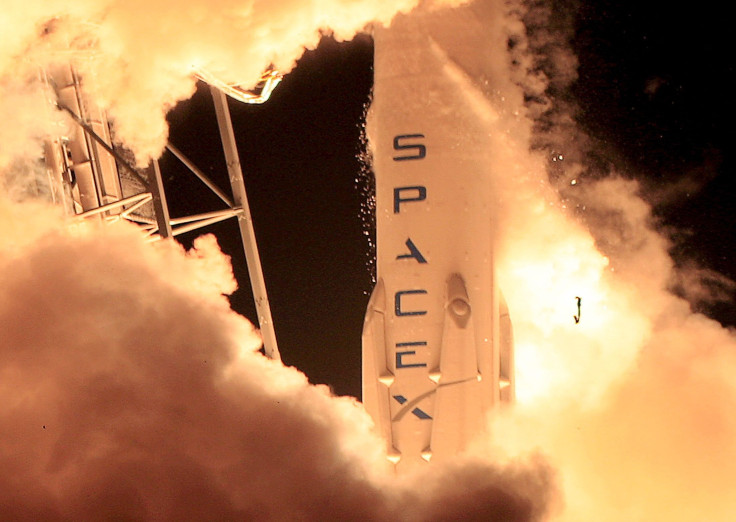SpaceX Engineer Was Once Forced To Crawl Inside Imploding Rocket: 'It Hurt Like Hell'

KEY POINTS
- In his book titled Liftoff, Eric Berger recalls stories from SpaceX's earliest years
- One of Berger's memorable experiences includes a fellow engineer doing a quick fix on an imploding rocket
- Then-propulsion engineer Zach Dunn told another engineer Mike Sheehan to grab a hold of his ankles and yank him out if the rocket started to explode
Back in September 2008, aeronautics company SpaceX found itself in a pickle. Almost out of money, SpaceX was pressured to successfully launch a rocket. During its last attempt, the company put two dozen SpaceX engineers on an Air Force jet to transport its Falcon 1 rocket to Hawaii. It was the company's last chance. Should it fail, SpaceX would be done for.
As the jet descended toward its landing, however, the engineers aboard heard "a loud, terrible, popping noise." Turns out, the worst has happened: The rocket was imploding.
In Eric Berger's book Liftoff, the senior space editor at Ars Technica recalled the moment when then-propulsion engineer Zach Dunn literally went straight to the heart of danger by crawling into its belly.
Berger's book features events and memorable stories from SpaceX's early years, when it was still far from being one of the most prestigious companies in the world. One of those stories involves Dunn's act of courage by doing a quick fix on the imploding rocket.
For the first few hours of the flight to Hawaii, the jet cruised smoothly above the Pacific. But on its descent, loud pops and pings started to ring through the cargo area, and dents began to appear on the rocket's body. The engineers aboard were able to identify that the rocket's liquid-oxygen fuel tank wasn't venting enough air to be able to keep up with the changes in pressure as the jet descended.
"The first thought I had was that this thing is going to implode and rebound," said Anne Chinnery, who was managing SpaceX's launch operations at the time, to Berger. "And it would kill all of us who were sitting next to the rocket in the airplane jump seats. So I hopped up and told everybody to get to the front of the rocket."
One of the SpaceX engineers asked the pilots to fly the plane higher, where the air pressure was lower. But the jet had just enough fuel to circle the base once more before landing. This gave SpaceX engineers about 10 minutes.
Dunn told engineer Mike Sheehan to grab a hold of his ankles and yank him out if the rocket started to explode. Dunn crawled into Falcon 1's belly, where sharp rocket parts scraped his back. As he reached a pressurization line to the fuel tank, the engineer twisted it open with a wrench and heard the hiss of air flowing in. He then gave Sheehan the signal to yank him out.
"Sheehan took this as a cry for help, yanking Dunn out of the interstage across the tangle of pressurization lines and valves," Berger wrote. "It hurt like hell, but Dunn emerged to find his efforts paying off."
As the engineers went back to their seats, they were relieved to see that the rocket began to inflate before them.
Dunn stayed at the aeronautics company for another decade, eventually becoming senior vice president of SpaceX's production and launch.

© Copyright IBTimes 2025. All rights reserved.





















